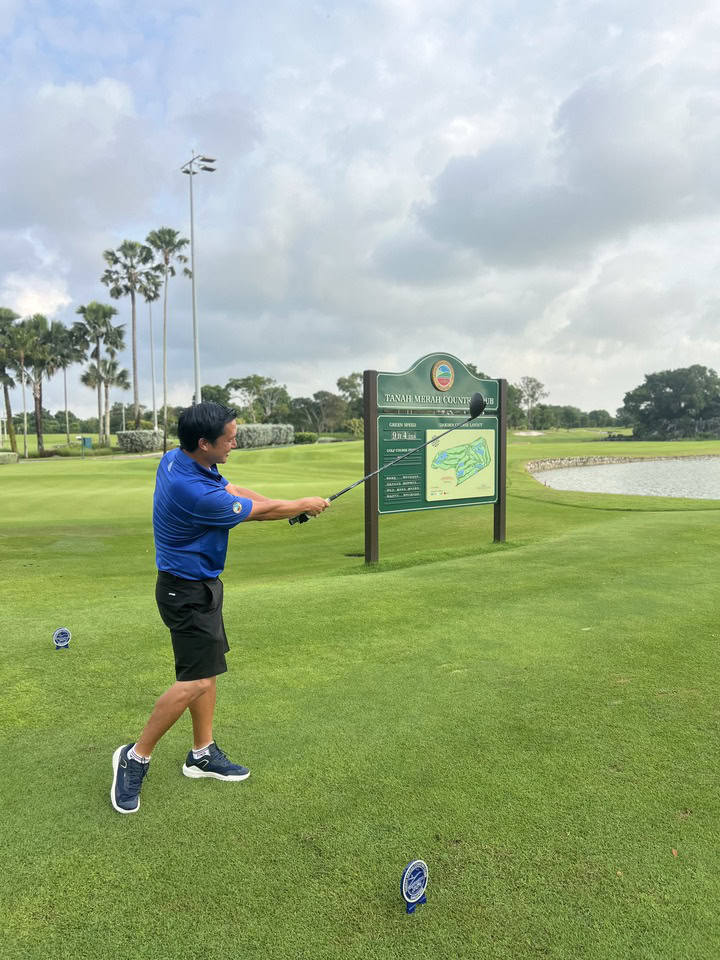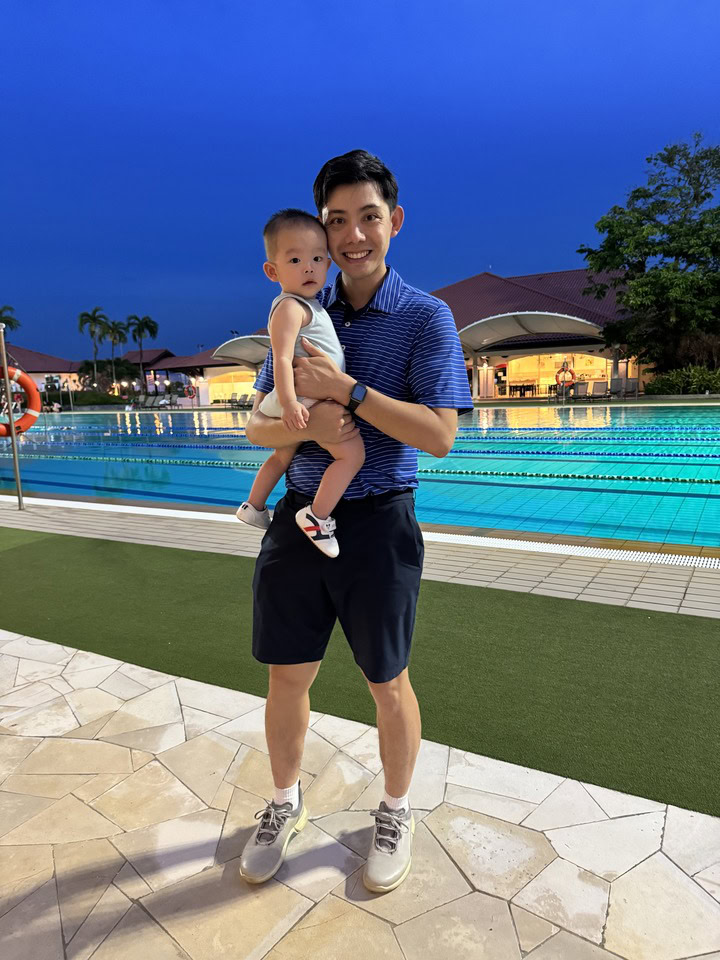Golf is in a good place right now. The game is growing here and abroad, and specifically among the young, and the women. That is a good thing, if not great.
But there is another undercurrent that pervades in Singapore, and many parts of the industrialized world. People are aging quicker than they are being replaced. This is a sobering thought, made more so if you consider the demographics of all golf clubs in Singapore today.
This is just one reason why the recent Millennium Term Membership program introduced at TMCC is such a refreshing, creative, commercially sound, and most importantly, essential initiative. The facts speak for themselves in support of our decision to roll this out.
Fact 1: Despite our membership base of between 2,000-2,500 members, our two 18-hole courses see utilisation rates of about only 70-75%. While this is enviable for golfers who prefer isolation when they play, it presents a missed opportunity that hits the club’s bottom line.
Fact 2: Since the last lease renewal, the Club’s membership levels have tapered slightly. This opens up capacity for new members without crowding out the current ones.
Fact 3: Costs are going up, but no one wants to pay higher subscription, green fees, or food and drinks at the Club. It is important for TMCC to continue delivering value to members while keeping costs down.
Current prices create a high barrier to entry for young working adults to afford a membership. On one hand we have an increasingly large and vibrant cohort that has taken up golf, and in inspired to continue playing the game. But on the other, the limited access to courses, and steep membership prices is a roadblock to their exciting and promising growth of golf in Singapore.
Remaining relevant is also a key priority for TMCC. Since golf course land leases in Singapore are not permanent, it is important that the club remains welcoming and inclusive. Younger members, particularly women, bolster our sustainability profile.
For these reasons, and many more, the Millennium Term Membership is a brilliant way to meet all TMCC’s needs. At only $100,000, it is a fraction of prevailing membership price. Together with the beneficial payment scheme, is a burden young, working adults are better able to bear. Besides, the Club have been selling term memberships for some time, and essentially, these are term memberships that not only bring in revenue, but also contribute to the positive demographics of the Club.
The advantages of bringing younger members in are obvious. Their new-found enthusiasm for the game encourages them to play as often as they can. Indeed, the current trend of working from home, and having more flexible hours make it easier for younger golfers to play during the week. Growing careers increases their resources and ability to support the club through expenditure. Those with young families can also embellish our important junior memberships.
In this edition of TMCC Today, we introduce three new members who joined TMCC through the Millennium Term Membership. Their personal stories are incredible examples of the all-accomplishing mindset of young Singaporean adults, and how golf has entered their lives in a positive way.
- Kylie Teo is a golf influencer, and online personality who runs TeeTimeGirls, a growingly popular initiative focused on promoting golf among young women.
- Melvin Chen is not only a qualified golf coach, but is also an entrepreneur with his own indoor golf facility.
- Lee Tze Yuan is quite the renaissance man, being a SEA Games Gold Medal winner in wushu, as well as working in GovTech fighting cybercrime.
Perhaps most crucially, MTM helps to bring in new ideas, and help to boost the vibrancy and sustainability of the Club. Having these new, young, creative and energetic members is a privilege that TMCC can ill afford not to embrace.
KYLIE TEO, ONLINE INFLUENCER AND FOUNDER OF TEE TIME GIRLS

How long have you been playing golf?
I’ve been playing golf since I was around 9 years old. I was introduced to the sport by my dad—he’s always loved golf, and it quickly became something we shared. In the beginning, it was really just about spending time with him, but over time, it’s grown into a much deeper part of my life.
Golf, to me, is about connection—whether that’s with family, with nature, or even with myself. It’s a way to spend quality time with the people I care about—whether that’s family, close friends, or even new friends I meet through the game. There’s something really special about the conversations and bonds that form out on the course. Unlike faster-paced sports, golf gives you the time and space to really connect with others and yourself.
It’s one of those rare sports where you get to slow down, think, and be present. It’s taught me patience, focus, and resilience. Every round is different, and that constant challenge keeps me coming back. It’s as much mental as it is physical, and I find that really fulfilling.
Why did you decide to take up the Millenium Term Membership?
I decided to take up the TMCC Millennium Term Membership because my family has been part of the club for many years, and it felt like a natural continuation of something that’s always been a big part of my life. I grew up at the club — taking lessons, playing on the course, and spending time with my family there — so it holds a lot of meaningful memories for me.
Even now, I still play there regularly with my family. My dad has made great friends through the club, and every time I step in, there’s this warm, welcoming atmosphere that feels like home. TMCC isn’t just a golf club to me — it’s a community, and being a part of it has always felt really special.
What do you like most about TMCC?
What I like most about TMCC is the overall atmosphere—it’s welcoming, familiar, and has a real sense of community. The facilities are excellent, and both courses are beautifully maintained and enjoyable to play on. But beyond the golf itself, it’s really the people that make it special. Whether it’s the staff, members, or just the friendly faces you see around, it always feels like a place where you belong. It’s somewhere I genuinely look forward to spending time, both on and off the course.
What do you do for a living?
I’m a content creator focused on skincare and golf. I share content across social media platforms that combines both my passions—offering skincare tips and reviews, as well as documenting my journey and experiences in golf.
I’m also the founder of Tee Time Girls, which is currently the largest female golf community in Singapore. I started the community to create a welcoming and inclusive space for women to connect through golf. We host regular games, events, and social gatherings that encourage more women to take up the sport and build friendships along the way. It’s all about breaking down barriers, making golf more approachable, and having fun while supporting each other.
How did you come up with Tee Time Girls?
Since playing golf from a young age, I always found it hard to find female friends to play with socially. Most of us were introduced to the sport by the men in our lives—our dads, brothers, or partners—so it often felt like a male-dominated space. I wanted to change that by creating a community where women could connect, support each other, and just enjoy the game together. Sometimes, girls just want to have fun playing with other girls!
That’s how Tee Time Girls started—a space for women who love golf, whether they’re beginners or seasoned players, to come together and feel welcome. Today, we’ve grown to over 1,000 active members, and the energy in the group is incredible. Everyone is so supportive, friendly, and open-minded, which makes the community really special.
We’re also incredibly thankful to our partners who have helped us make golf more accessible for women. Through their support, we’ve been able to create more opportunities—whether it’s through events, clinics, or social games—that make the sport feel less intimidating and more fun.
What trends are you seeing in golf among young women?
Golf is definitely making a comeback, especially among younger people and women. I think a big part of that is the way the sport has evolved—it’s no longer seen as just an “old man’s game.” There are now more fashion-forward options, better equipment designed specifically for women, and media portrayals that show golf as a fun, social, and even stylish sport.
From speaking with the women in my community, I’ve learned that many are drawn to golf for the challenge—it’s both mentally and physically engaging—but also for the lifestyle. The fashion is chic, the environment is social, and it’s a great way to spend quality time with friends or loved ones. Whether it’s out on the course or at indoor simulators, they love that golf allows them to connect with others and even build lasting friendships.
I think the current trend is all about breaking old stereotypes. Young women are showing that you can be competitive, fashionable, and social in golf—and they’re helping to make the sport more inclusive and exciting for the next generation.
How can golf grow among the young?
To grow the game among young people, the golf community needs to focus on making the sport more accessible, inclusive, and relatable. For a long time, golf has had a reputation for being expensive, exclusive, and overly traditional—which can be intimidating for newcomers, especially younger players.
We need more affordable and beginner-friendly entry points, like casual clinics, social events, and indoor simulators that remove the pressure of a full 18-hole game. Representation also matters—when young people, especially women, see others like themselves enjoying the sport, it becomes easier to imagine themselves being part of it too.
Another key area is modernizing the culture around golf. That includes embracing new fashion, promoting diverse voices, and supporting communities that make the sport feel fresh and fun. When golf feels approachable and welcoming, not just competitive or elite, that’s when real growth can happen.
MELVIN CHEN, GOLF COACH AND ENTREPRENEUR

How did you get into golf, and what prompted you to become a teaching professional?
My dad was a keen golfer, and he was a TMCC member. When I was 10, he enrolled me for lessons with my mum. Before we knew it, we started to go to the range 3-4 times a week and play course on weekends. I decided to turn professional when I was 25, and I’m a qualified coach certified by the Singapore Professional Golfers’ Association. Even though I also have a degree in psychology from California State University (Northridge), it is a passion of mine to impact golf knowledge to the everyday golfer as well as new golfers. I am a business owner of an indoor golf facility at Kallang Wave Mall called GolfWav, and also coach there. Being in the golf business has its challenges. Although there was an increase in golf awareness since COVID, it may have now plateaued.
Why did you decide to take up the Millenium Term Membership?
The decision to join the Millennium Term Membership was a no brainer. Firstly, it brings back memories when I was a junior golfer. Secondly, I have other friends who are members as well, and I envision myself playing more golf with them.
What do you like about TMCC?
TMCC has two very unique golf courses that cater to a wide range of golfers. The club culture is very friendly, and other facilities are convenient as well.
What do you see as the main stumbling block in golf that prevents beginners from getting better?
Golf is not an easy game to start and learn, as it requires time and patience to pick up the basics. My advice to new golfers is to set aside a proper time schedule and a budget to learn golf. If you start learning well, it will be a game for a lifetime.
What do you think needs to happen in Singapore in order to see the game grow?
Indoor golf facilities have been sprouting up in Singapore due to the closure of ranges and some golf courses. I believe these will help. I also think good nine-hole public golf courses are also important for the growth. Nine holes are enough as most don’t have time to play 18. There also has to be better access to golf courses for the public to encourage more growth.
LEE TZE YUAN, SEA GAMES GOLD MEDALLIST IN WUSHU, CYBERCRIME FIGHTER

How long have you been playing golf?
I started when I was studying in the Bay Area (San Francisco, California). There was a driving range up on Berkeley Hill, and I remember the stunning sunsets as I practiced there after work. That’s what got me hooked.
How often do you play, and usually whom with?
I have a child now, so I try to get a game in about once a month. It’s not easy finding a common time with my regular kakis, but I also enjoy showing up and getting paired with folks at the tee box.
Golf represents a craft for me—it’s a never-ending pursuit of excellence and performance. I love the strategy behind the game, how you adapt to changes while holding faith and positivity that you’ll eventually get the ball to the pin.
How long have you practiced wushu, how did you start?
I’ve been practicing wushu since 2005—it’s been 20 years! It started serendipitously. A family friend opened a wushu school, and my whole family joined in to support. I guess the rest is history.
Tell us about your Gold Medal in the SEA games?
I represented Singapore in the men’s taijiquan and Taiji Jian categories. There’s often a misconception that Taiji is only for the elderly. In competitive settings, it demands immense precision, artistry, and athleticism. You’re practicing minute details, choreographing your routine to music, and landing with control to score points.
People still tease me about it—even 10 years on—because I teared up during the medal ceremony. It was a wave of emotion – a mix of relief and pride that all the hard work, with a bit of luck, paid off.
If there is a common thing between wushu and golf, what is it?
There are many, but I would group them into three categories: technique, physical conditioning, and strategy.
With technique, both sports demand precision. In Taiji, there are hundreds of moves to practice and refine, each with theoretical underpinnings. Similarly, golf may have one swing, but there are countless ways to refine it depending on your body type, your intent, and the situation you’re facing.
Physical conditioning is also crucial. I apply what I’ve learned from Taiji to my weekly routine—staying flexible and strong for better performance in golf. The principle of strength and conditioning cuts across all sports.
Finally, there’s strategy. In competitive Taiji, you analyze trends, understand what judges are looking for, and tailor your performance accordingly. It’s the same with golf—I reflect on my style, observe how I react physically and emotionally under different conditions, and adapt my play strategically.
Do skills required in Wushu translate to golf?
Well, it hasn’t translated into a low score yet—I’m a 20-handicapper! But I approach the game intentionally. I learn from each session, stay disciplined about strength and conditioning, read the numbers, and stay in tune with how I feel—physically and emotionally—throughout the game.
Most importantly, I try to stay present, enjoy the company, and not take myself too seriously.
What prompted you to take up the Millenium Term Membership?
My first impression of TMCC came after I returned from overseas and volunteered at the Hana Financial Championship. Watching the pros navigate the course—and then playing it myself—got me hooked.
I was impressed by the club’s hospitality and how well the courses are maintained. TMCC has been around for around 40 years, and the conditions are still excellent. That really stood out to me.
What do you do for GovTech?
I’m a Product Manager at GovTech, which means I combine business acumen with tech development to build impactful, viable products. Product managers are responsible for defining the “why” and “what” behind the product—why does it need to exist, what problems are we solving, and what’s the best solution?
Over the years, I’ve worked on problem spaces ranging from Cross-Border Digital Identity to using AI to combat online scams. For example, we’ve explored ways to detect fraud through system log analysis with AI and developed tools that help agencies respond faster to threats.
Tell us something about online scams that the public isn’t aware of?
What surprises most people is how much social engineering goes into scams. It’s not just technical trickery (a fake website that looks real)—it’s about manipulating human psychology.
Take the government impersonation scams. They work because they exploit fear. Victims panic and rush to prove their innocence, giving up bank details or OTPs in the process.
Scammers carefully design these scenarios to create urgency and emotional pressure. That’s why emotional awareness and staying calm are just as important as tech defences.
At GovTech, we collaborate with enforcement agencies and regulators to build technology that helps detect, prevent, and respond to scams. But technology alone isn’t enough. Public education is key. Just like we build immunity to viruses, we need to update our “mental immunity” to scams—through awareness, critical thinking, and conversation.
What are the best ways in which we prevent ourselves from being scammed?
Always think critically. Here’s a tip: Would you tell a trusted family member about the transaction the scammer is pushing you to make? If the answer is no, it’s a big red flag. Scams rely on secrecy, pressure, and emotional manipulation.
So, take a breath, pause, and verify. Talk to someone you trust, double-check the situation, and remember—it’s okay to say no.
